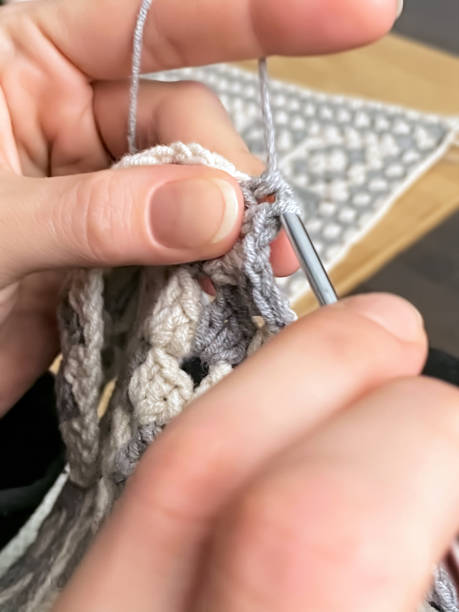Craftsman houses, also called American Craftsman homes or Arts and Crafts, are a style of architecture popular in the 19th and early 20th centuries. The Craftsman style was developed as a reaction to Victorian house architecture’s ornate and elaborate designs. It emphasized functionality, simplicity, and handcrafted components.
Craftsman-style houses are distinguished by their gabled, low-pitched roofs and wide overhanging eaves supported by decorative brackets. Roofs are often exposed with rafters. Exteriors are usually covered in natural materials like wood siding, brick, or stone. Front porches are often tapered columns or pedestals or include low stone walls or railings.
Craftsman-style houses are characterized by their attention to natural materials and handcrafted details. The woodworking details, such as exposed beams and built-in cabinets, are also evident. Interiors are often open-plan, with large fireplaces and many windows to let in the natural light.
Craftsman-style houses promote a sense of connection with nature. Large windows, skylights, and covered outdoor areas blur the distinction between indoor and outdoor life. Interior color schemes are earthy and subdued and feature natural wood tones.
Craftsman architecture became popular in America during the early 20th Century, especially in California. England’s Arts and Crafts movement heavily influenced it. It was promoted by architects like Gustav Stickley and Greene and Greene, who promoted the idea that well-crafted homes were affordable and celebrated skilled workmanship.
Craftsman-style houses are still sought after and admired today because of their timeless design and functional layout. They also pay attention to details. Craftsman-style houses are still a popular architectural style for residential construction. They offer a warm, inviting aesthetic and a focus on high-quality craftsmanship.
What is the origin of the name Craftsman
The magazine “The Craftsman” was founded by Gustav Stickley. Stickley is a leading figure in the Arts and Crafts Movement. Stickley and other influential designers and architects promoted the Craftsman design as a reaction to the ornate, mass-produced Victorian designs.
Stickley’s Magazine was key in spreading the Craftsman Style and its ideas during the early 20th Century. The “Craftsman” magazine included articles on interior design, architecture, and other Arts and Crafts Movement aspects. The Magazine featured Craftsman style homes by Stickley and others and provided plans and instructions on how to build and furnish Craftsman-inspired houses.
The Magazine promoted the idea of quality design, simplicity, and honesty. It also emphasized the importance of handcrafted items. Stickley believed that well-crafted furniture and homes could enhance the lives of everyday people. He wanted to create a movement that celebrated handcrafted and skilled craftsmanship.
The term “Craftsman,” which was used to describe the Craftsman architectural style, became more popular as the Craftsman style gained popularity. The term “Craftsman,” which reflects the association between the ideals and principles of Gustav Stickley and the Arts and Crafts Movement, was used widely to describe this style. The term “Craftsman,” first used to describe a distinctive architectural style, has been widely adopted.
The Craftsman House: Its Origins
Craftsman-style houses were inspired by the American Arts and Crafts movement of the late 19th Century. The arts and crafts movement influenced architecture, interior design, and other decorative arts. The California bungalow style gained popularity in Southern California, earning it the name “California Bungalow.” The style spread across the rest United States, mainly by Gustav Stickley. He was the creator of The Craftsman.
Charles and Henry Greene are prolific architects who have adopted this style. They are responsible for its widespread popularity in California. The British Arts and Crafts movement, as well as Oriental Wood Architecture, inspired them.
Craftsman house characteristics
The use of local materials is encouraged in the craftsman style. It is a common feature of arts and crafts styles. The simple shapes contrast the Gothic Revival and Victorian styles of the day.
Craftsman houses will have gabled roofs with low pitches and long eaves. According to the arts and craft style, wooden beams or rafters are often left exposed. A large front porch is usually found under the long eaves, surrounded by heavy columns. Wood, stucco, and stone are all used as decorative elements. You will typically see double-hung and dormer windows.
Like the exterior, the interior will also have exposed woodwork, adding charm. The layout of the house is often simple and open. In Craftsman-style houses, elements such as shelves or nooks on the wall will be found. The fireplace will usually be the focal point of the room. The house’s interior will also be filled with natural materials in earth tones.
These homes were originally only one- or one-and-a-half stories high, but they have evolved to accommodate the needs of American families. They are now almost always two stories. These homes were very popular in America during the early 1900s but fell out of fashion for several decades. Recently, these homes are gaining popularity again with some modern updates.
What type of area rug will look best in a house with American Craftsman Architecture
It’s important to consider the design principles of an American Craftsman home, which include simplicity, craftsmanship, and natural elements. This quintessential American style of architecture would look best with antique handcrafted area rugs made by American artisans. However, other types could also work well.

